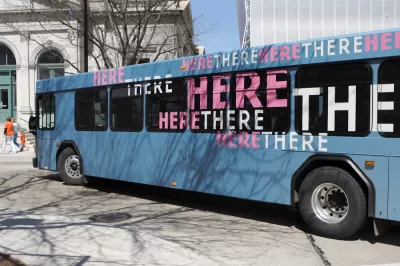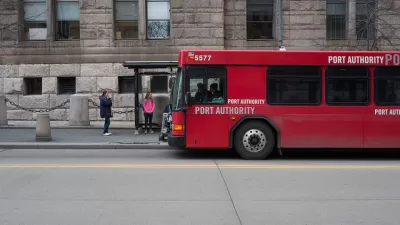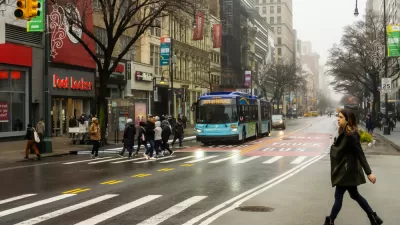Transit experts want to optimize the benefits of the biggest network of separated busways in the country.

Rather than building light rail, highways, or hyperloops, some advocates want Pittsburgh to look to its extensive busway system as a means to ease traffic, reduce greenhouse-gas emissions, and improve access to jobs.
Speaking to experts on transit and economic development, Ryan Deto recommends three basic strategies to expand the benefits of Pittsburgh's existing system.
-
Rebrand: Pittsburgh busways were originally named for colors, and the article suggests returning to this system. Currently, lines are named for the directions they take: South Busway, East Busway, and so forth.
-
Improve accessibility: Many stations are hostile to pedestrians and people with disabilities, Deto writes. Better ingress and street-facing design could improve visibility and use of the stations.
-
Encourage transit-oriented development: Deto points to studies suggesting that mixed-use development around busway stations could reduce poverty by providing access to jobs. Port Authority, which manages Pittsburgh buses, offers TOD guidelines, but they are not mandatory.
Advocates are pushing for a busway vision before potential changes to state and federal transit funding in 2022, when funding from the Turnpike Commission expires. A more thorough set of suggestions for Pittsburgh's busway network is explored in the article.
FULL STORY: How busways can lead Pittsburgh into an equitable public transit future

Maui's Vacation Rental Debate Turns Ugly
Verbal attacks, misinformation campaigns and fistfights plague a high-stakes debate to convert thousands of vacation rentals into long-term housing.

Planetizen Federal Action Tracker
A weekly monitor of how Trump’s orders and actions are impacting planners and planning in America.

San Francisco Suspends Traffic Calming Amidst Record Deaths
Citing “a challenging fiscal landscape,” the city will cease the program on the heels of 42 traffic deaths, including 24 pedestrians.

Defunct Pittsburgh Power Plant to Become Residential Tower
A decommissioned steam heat plant will be redeveloped into almost 100 affordable housing units.

Trump Prompts Restructuring of Transportation Research Board in “Unprecedented Overreach”
The TRB has eliminated more than half of its committees including those focused on climate, equity, and cities.

Amtrak Rolls Out New Orleans to Alabama “Mardi Gras” Train
The new service will operate morning and evening departures between Mobile and New Orleans.
Urban Design for Planners 1: Software Tools
This six-course series explores essential urban design concepts using open source software and equips planners with the tools they need to participate fully in the urban design process.
Planning for Universal Design
Learn the tools for implementing Universal Design in planning regulations.
Heyer Gruel & Associates PA
JM Goldson LLC
Custer County Colorado
City of Camden Redevelopment Agency
City of Astoria
Transportation Research & Education Center (TREC) at Portland State University
Jefferson Parish Government
Camden Redevelopment Agency
City of Claremont





























